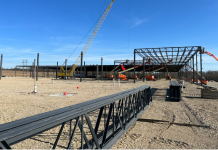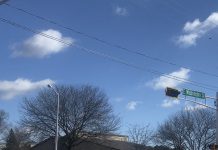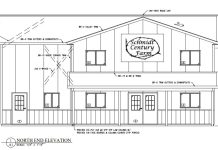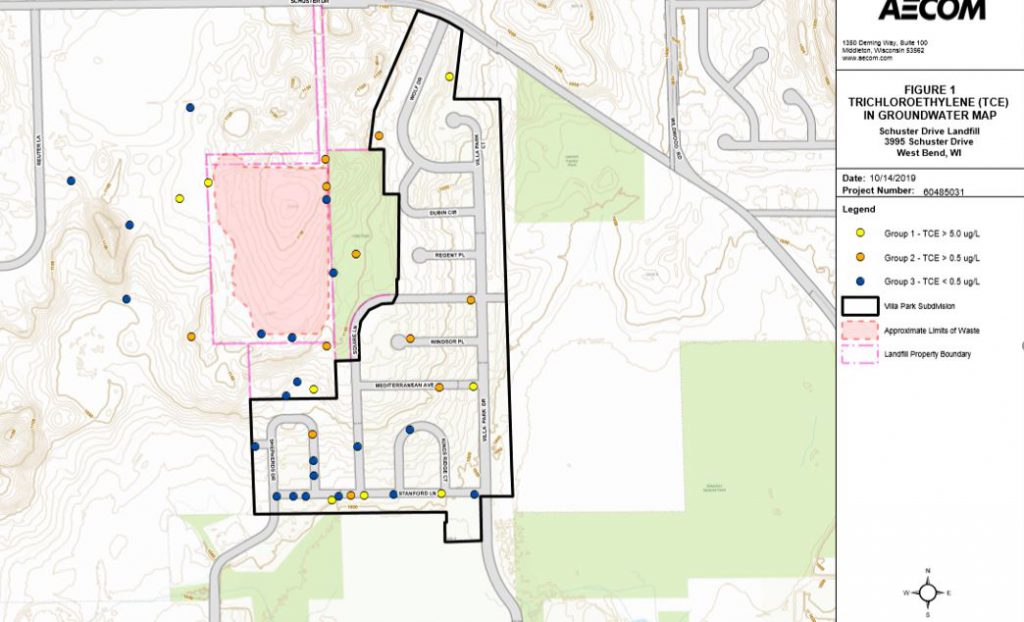June 24, 2020 – West Bend, WI – An update was provided this week as the City of West Bend hosted its second public information meeting on the Villa Park / Schuster Drive landfill. The 30-acre parcel on the west end of town includes a 23-acre landfill.
On a history note, that site used to be considered “out of town” years ago when it served as a municipal / private dump from 1964 – 1984. There was no liner so any waste or liquid/chemical disposed of at that site would eventually seep into the water table. In 1982 the Wisconsin DNR closed the landfill. The City of West Bend has been monitoring the groundwater since 1999. Click HERE for more information from a public information meeting in October 2019.
AECOM from Milwaukee is the company monitoring the landfill the past 20+ years. Hydrogeologist Leo Linnemanstons with AECOM, spoke extensively at the meeting Monday night. He said they are monitoring a plume and its position from the landfill.
- Click HERE for a PDF of the PowerPoint presentation by AECOM
The plume is Trichloroethylene (TCE) which has been found in the air and in the groundwater in Villa Park. TCE was used by factories to clean metal and it was in paint. TCE, according to Linnemanstons, migrates via ground water and can “gas off.” It can enter a house, very similar to radon.
Linnemanstons said it all depends on the flow of the plume, depth of groundwater, how close it gets to the surface, and soil conditions.
AECOM is going to monitor air in Villa Park neighborhood homes to find the pattern of where they need to concentrate their efforts.
Below is a map of the Villa Park neighborhood with Schuster Drive to the north, Villa Park Drive to the east, the landfill is surrounded by the pink line, Highway 33 is to the south. The concentrated areas of TCE are around Stanford Lane, Shepherds Drive and Mediterranean Avenue.
Below are bullet points of information from Monday’s meeting.
- The landfill contains an estimated 800,000 cubic yards of waste and liquid solvents
- Contamination, in proximity to homes, started testing for vapor data in 2019.
- Most concentrations of TCE were in SE part of subdivision: Stanford Lane, Kings Ridge Court W and E and Villa Park Drive.
- 400 homeowners were notified, 200 homes were accessed, 22 mitigation systems were installed.
- Three quarters of subdivision is at low risk and focus on SE quadrant. Did find a few instances of vapor intrusion and deployed air purification units.
- Upcoming activities… conduct added soil borings and permanent groundwater monitoring, well installation and prepare site-investigation report. Look at more than half the properties and prioritized test results.
Below are answers to questions posed by residents of Villa Park subdivision. Answers presented by Leo Linnemanstons and Tory Schultz with AECOM
- Potential sump pump VOC discharge. If the sump pump water discharge could affect children or pets that come in contact with that water. Calculated a hazard quotient and it was 1/1000 – the TCE levels in water discharge are not above levels of human health concern.
- Is it safe to grow and consume vegetables? Produce grown in Villa Park is safe to eat. TCE would pass through a plant and be released into the air.
- What are health concerns: Long-term exposure there were concerns about kidney, liver, lung and immune system. Increased risk of kidney liver and non-Hodgkin’s lymphoma.
- Jansen Park and people fishing; are fish safe to eat? With the small amount of sump pump discharge – the water would be low in concentration. Not having pond data – it’s probably low TCE and fish not impacted.
- Possible loss of home values: The discussion has been about TCE and keeping residence safe.
- About 12% of the homes tested require a mitigation system. There were 400 homes and 22 had mitigation units. AECOM, DNR, and Health Department are presenting as much data as possible and working toward transparency.
- Our home was not tested. Let’s say we try to sell and it doesn’t pass the test. Will the city pay for the subslab testing system? City administrator Jay Shambeau. “There are a lot of variables” in that scenario. Data should be brought to the City and it will be assessed.
- Would the City install systems on all homes just to be safe? We have to follow DNR guidance and we need to investigate and gather data rather than moving straight to mitigation.
- Cost – about $500,000 to date on the testing. Much has been for the testing and lab results and who pays for this it is the City of West Bend.
- Click HERE for a PDF of the PowerPoint presentation by AECOM.
What’s next? Conduct added soil borings and permanent groundwater monitoring well installation and prepare site investigation report.









